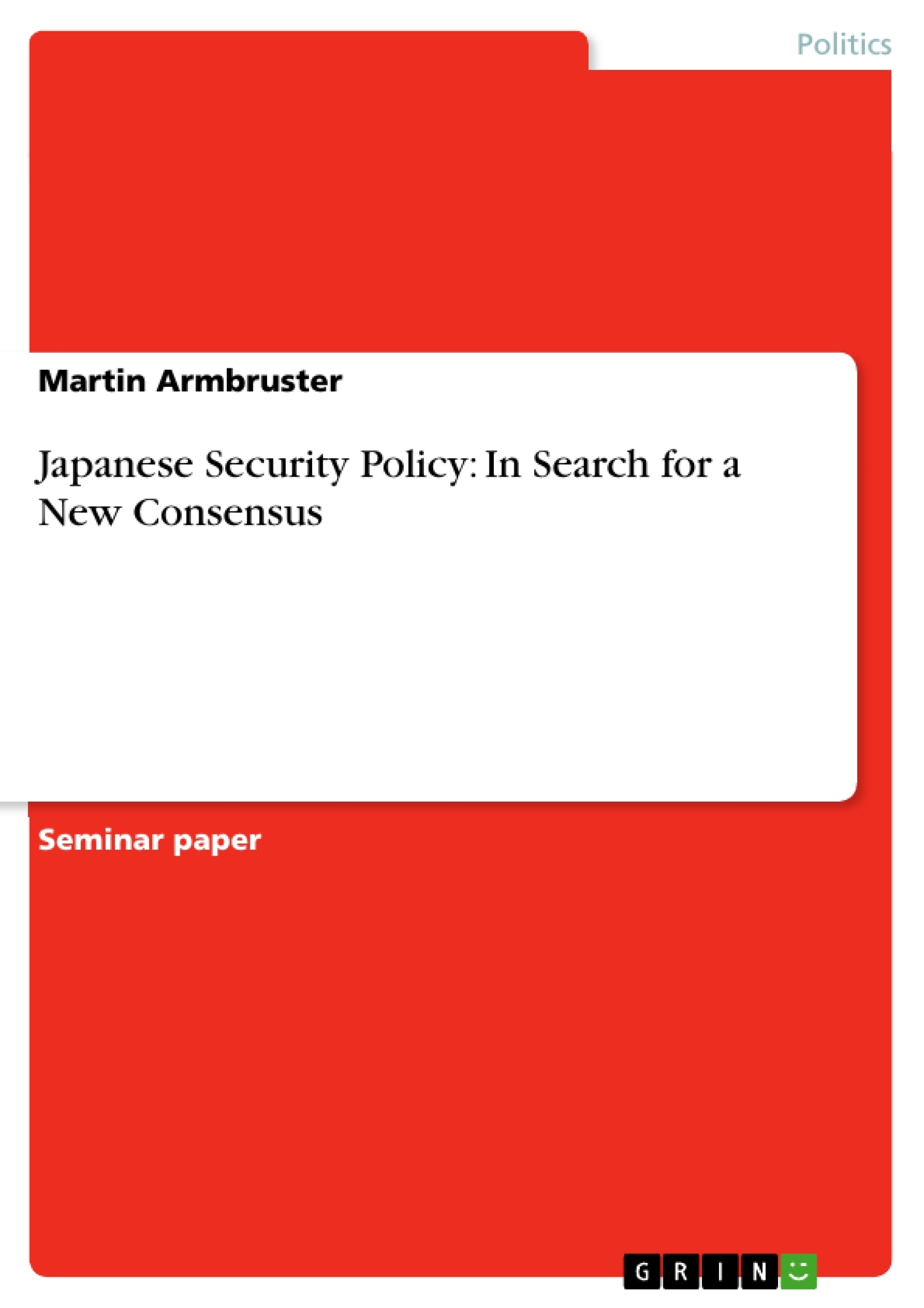After its devastating defeat in World War II, Japan has become one of the major economic powers in the world, ending the twentieth century as the world’s second largest economy. Although Japan has grown to economic great-power status, its political weight in international politics lags far behind. Why is that? During the Cold War, Japan linked itself closely to the United States as the dominant regional force in East Asia. By renouncing war and the possibility to become a major military power again, Japan laid its national security almost fully in the hands of the United States. Japan’s dependence on U.S. power marginalized its role in world affairs. On the other hand, however, the security guaranteed by the United States provided the basis for Japan’s economic rise. Since the end of the Cold War, the parameters of the U.S.-Japan alliance have been called into question. Japan’s post-war foreign policy – known as “Yoshida Consensus” – which rejected the use of military might to achieve political ends and contained several self-imposed restrictions on the use of military has been softened more and more. A development that has been documented best in the deployment of Japan Self Defense Forces (JSDF) in Iraq by the Koizumi administration. Although the U.S.-Japan alliance is arguably stronger than ever before, the role of Japan within it is probably less secure than ever before. To understand this, it is necessary to analyze the circumstances which motivated Japan to change its long-time security approach. Indeed, the Asian region has changed dramatically since the end of the Cold War. Japan is now facing several new challenges, mostly important the rise of China, that haven’t played a role during the era of the iron curtain. Do those challenges require new policies? Is there a “new” Consensus about Japan’s foreign policy? What will be Japan’s strategy for the twenty-first century? Those are the questions this paper is about. The paper is separated into three parts. First, I will analyze the factors by which Japan’s foreign policy is determined. A step that is crucial to understand possible future security options. In the second section I will present different security options, Japan has in the future. Finally, I will sum up some of the results and will present a few of my own thoughts about Japan’s future.
Inhaltsverzeichnis (Table of Contents)
- Introduction
- Japan's Position in Asia
- Japan's Strategic Options
- Conclusion
Zielsetzung und Themenschwerpunkte (Objectives and Key Themes)
This paper aims to examine the evolving security policy of Japan in the post-Cold War era. The paper analyzes the factors shaping Japan's foreign policy, identifies key strategic options available to the country, and explores the potential for a new consensus on Japan's role in world affairs.
- Japan's security policy in the context of a changing East Asia
- The rise of China and its impact on Japan's security
- Japan's strategic options in a "realist" world
- The potential for a "Goldilocks Consensus" on Japanese security policy
- The future of Japan's relations with its Asian neighbors
Zusammenfassung der Kapitel (Chapter Summaries)
- Introduction: This section provides an overview of Japan's economic rise and its relatively limited political influence in world affairs. It discusses the key factors shaping Japan's security policy, particularly its dependence on the U.S. for security and the limitations imposed by the "Yoshida Consensus." The introduction concludes with a presentation of the research questions that will be addressed in the paper.
- Japan's Position in Asia: This chapter explores the constant factors that have shaped Japan's security behavior in the past, such as its geographic situation, history issues, and geostrategic position. It also discusses new post-Cold War challenges, including the rise of China, North Korea's belligerent posture, the possibility of U.S. abandonment, and Japan's relative economic decline.
- Japan's Strategic Options: This chapter presents two general security strategies that Japan could pursue in the future: a "muscular nationalist foreign policy" and a "cautious liberalism" approach. It then outlines different security policy preferences among the Japanese people, categorizing them into four groups: Normal nationalists, Middle-power internationalists, Neo-autonomists, and Pacifists.
Schlüsselwörter (Keywords)
This paper focuses on the evolving security policy of Japan in the post-Cold War era, with particular attention to the rise of China, the U.S.-Japan alliance, and the potential for a "Goldilocks Consensus." Key concepts include "Yoshida Consensus," "muscular nationalism," "cautious liberalism," and "security dilemma." The paper also explores different security policy preferences among the Japanese people and analyzes Japan's strategic options in a changing East Asian landscape.
- Quote paper
- Martin Armbruster (Author), 2009, Japanese Security Policy: In Search for a New Consensus, Munich, GRIN Verlag, https://www.hausarbeiten.de/document/198349


